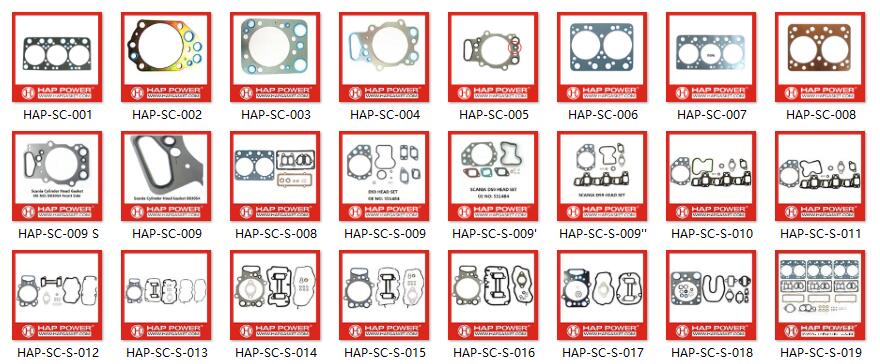Whether ion exchange to form ion pairs or ligand exchange to generate new compound extraction, the reaction difficulty and speed are also affected by the anion geometry. It is generally considered that the tetrahedral structure is easier to extract than the octahedral structure. For example, (AuCl 4 ) - , (PdCl 4 ) 2- , (PtCl 4 ) 2- system tetrahedral structure, four Cl - are bonded to the four symmetry planes of the central ion, and are left unfilled in the direction of the square axis The electron orbitals, the organic cations or positively charged groups of the extractant are easily separated from the central ion from these two directions to form a new ion pair of an anion and an organic cation. And (PtCl 6 ) 2- , (RhCl 6 ) 3- , (IrCl 6 ) 3- and other anionics belong to the d 6 electronic configuration, and six Cl - surround the central ion group to coordinate into an octahedral compact structure, so that It is difficult for organic cations to be close to the central ion, hindering electron pairing, and it is difficult for the chelating agent molecule to destroy this structure and replace the Cl - ligand. The amine can extract Pt (IV), Pt (II), Pd (II), Ir (IV) and Rh (III). The extraction coefficient (D) of the platinum has a similar law, so when the platinum is selectively extracted, the liquid should not contain. Ir(IV) is co-extracted with platinum. The partition coefficient is the largest when [HC1] is about 4mol/L, but Ir(III) is not extracted under high acidity. To reduce the co-extraction of bismuth and platinum, the solution should first use sulfur dioxide. A weak reducing agent such as ascorbic acid or hydroquinone reduces Ir(IV) to Ir(III). Regardless of the valence state, the ruthenium is partially co-extracted with platinum at low acidity, so the acidity of the solution should be greater than 1 mol/L.
Scania Head Gasket usually have three types: Single cylider, two cylinders and three cylinders. Most of them are metal and rubber compound material. These gasket have a big market share on Europ, Middle East and South America market.
Scania products are sold to more than 100 countries and regions in the worlds, is one of the world's leading manufacturers in heavy duty trucks and buses,With it's technology leading modular system, Scania has become the most profitable company in commercial automotive industry.
Scania Engine Gaskets Scania Head Gasket,Scania Engine Gaskets,Scania D8 / D9 / D11 / DS11 / D12 / D13 / D14 Head Gasket, Scania Metal Head Gasket, Scania Metal and Rubber Compound Gasket HAFID INTERNATIONAL LIMITED , https://www.hapgasket.com
(3) some form solvates extraction of precious metal chloro complex anions at neutral to low acidity and low [Cl -] concentration of the aqueous solution, the ligand Cl - can be substituted by H 2 O water molecules containing different numbers generated after hydration with anions (anions with ruthenium in more typical), or total substitution of cationic hydrate formation (most typically rhodium), which changes the nature of a correspondingly larger. There is a class of neutral solvating extractants, such as alcohols, ethers, esters, ketones and phosphines. The extractant molecules can replace some of the water molecules from the noble metal hydrated anion, ie by solvation in the precious metal complex. The outer layer forms a hydrophobic solvate, which reduces the solubility in water, and does not change the valence and configuration of the noble metal complex to extract the precious metal into the organic phase. The reaction formula is:
MCl•(H 2 O)m+nS (solvated extractant molecule)→MCI•(H 2 O) mn ·nS+ nH 2 O
2. Extraction separation sequence Reasonable separation order is determined by the nature and concentration of each precious metal. Metals that are easily oxidized or volatilized or have high concentration and are unstable should be separated first. For example, ruthenium and osmium are easily oxidized and volatilized, and are first separated by oxidative distillation. In several or all of the coexisting metal chloride solution gold, palladium, platinum, rhodium, iridium and the like, gold, palladium chloride complex electronic structure, whether of central ions, complex geometry, etc. are the most unstable The oxidation potential of Au/Au(III) is very high, and the metal can be reduced by boiling, so it should be separated first, and then the palladium is separated. The Pt(IV) complex is very stable, and it is not easy to undergo valence change and hydration. Its concentration is high, and platinum should be separated after separation of gold and palladium. The properties of Ir(IV) and Pt(IV) complexes are very similar. The extraction properties are basically the same. After extraction, the platinum ruthenium can be separated by stripping, and Ir(IV) can be easily reduced to refractory. After taking Ir(III), the platinum is extracted and then the Ir(III) in the solution is oxidized to Ir(IV) to extract ruthenium. Rh(III) complexes are the most stable in nature, low in concentration, and generally extracted last. That is, the usual separation order is: Os, Ru→Au→Pd→Pt→Ir→Rh.
The extraction properties of the anion with different valence states of the same metal or the anion of the same valence state of different metals are very different. The extraction capacity of the selected extractants for the metal to be extracted is also limited, in order to improve the selectivity of extraction separation. Extraction efficiency, extraction process also includes steps of concentration, dilution, neutralization, oxidation, reduction, etc., continuously adjust the acidity of the solution, the concentration of precious metals in the solution and stabilize the precious metal to the desired valence state. [next]
Industrial extractant commonly used in the separation of precious metals: extraction of gold, alcohol, ether, ketone, ester and other neutral oxygenated organic compounds (such as diethylene glycol dibutyl ether, mixed alcohol, methyl isobutyl ketone), sulfur extraction agents (such as thiols, thioethers, sulfoxides) and the like; extraction of palladium thioether, hydroxamic amine; extraction platinum, iridium, nitrogen-containing organics (such as amines), phosphorus-containing organic compounds (e.g., tributyl phosphate, trialkyl Phosphine oxide) and the like.
The usual diluents organic phase sulfonated kerosene, aliphatic hydrocarbons, benzene, xylene, diethylbenzene and the like.
The major platinum group metal refineries abroad use different structures of the extraction process. For example, the process of the Royston refinery in Marseille-Rustenberg is: methyl isobutyl ketone (MIBK) extraction of gold → oxonium (β-OXH) extraction of palladium → oxidative distillation 锇, 钌 → tertiary amine (R 3 N) extraction of platinum → oxidation of tertiary amine (R 3 N) extraction 铱 → ion exchange separation of ruthenium metal → final extraction of ruthenium. The process of the International Nickel Corporation (INCO) Acton refinery is: oxidative distillation of ruthenium, osmium → dibutyl carbitol (DBC) extraction of gold → thioether (R 2 S) extraction of palladium → tributyl phosphate (TBP) extracts platinum, rhodium, and finally extracts rhodium.
The extraction process in China is: oxidizing distillation 锇, 钌 → DBC extraction of gold → thioether (S 201 ) extraction of palladium → tertiary amine (N 235 ) extraction of platinum → P 204 extraction of ruthenium metal → hydrolysis enrichment 铑铱 and then separated from each other.
The following sections describe some specific extraction techniques.
3. Extraction and Separation Gold In the industry, gold is mainly extracted and extracted from a precious metal mixed solution by using two kinds of extracting agents, methyl isobutyl ketone and diethylene glycol dibutyl ether.
(1) Methyl isobutyl ketone (MIBK) extraction of gold MIBK is mixed with a precious metal solution to extract gold into the organic phase, and the partition coefficient of the gold extraction is greater than 100. The MIBK formula CH 3 COCH 2 CH(CH 3 ) 2 has a relative molecular mass of 100.16, a density of 0.8006 g/cm 3 (20 ° C), a boiling point of 115.8 ° C, a flash point of 27 ° C, and a solubility in water of 2% by volume.
MIBK is extracted from 100% MIBK from complex components containing HCl concentration 0.5-5.0 mol/L, containing (g/L) Au 0.87, Pt 2.65, Pd 1.55, Rh 0.2, Ir 0.18, Cu 5.3, Ni 7.3. :
(CH 3 ) 2 CHCH 2 COCH 3 (O)+HAuCl 4 ====[(CH 3 ) 2 CHCH 2 COCH 3 H]++AuCl 4(O) -
According to the organic phase (O) / water phase (W) = 1 ~ 2, three-stage countercurrent extraction was carried out, each phase was mixed for 5 min, and the stroke rate was >99%. When extracted under high acidity, elements such as Fe(III), Te(IV), As(III), Sh(IV), Se(IV) and a small amount of platinum are co-extracted, and other precious metals remain in the residue. Gold-loaded organic phase was washed with dilute hydrochloric acid after removing impurities co-extracted, with iron powder directly from the organic phase, the crude gold substitution, the organic phase is returned to use. The MIBK extraction also separates non-noble metal impurity elements, which is beneficial to the subsequent extraction and separation of other precious metals in the residue. The disadvantage is that MIBK is water soluble. [next]
(2) Diethylene glycol dibutyl ether (DBC) gold extraction DBC formula C1 2 H 26 O, density 0.8853 g/cm 3 (20 ° C), boiling point 254.6 ° C, flash point 118 ° C, solubility in water 0.3%. The advantage of DBC gold extraction is that the organic phase has small water solubility, wide adaptability to solution acidity, high extraction partition coefficient (>100), and direct reduction back extraction of pure gold. For example, from [HC1] about 3 mol / L, [Cl - ] about 6 mol / L, containing (g / L) Au 3.0, Pt 11.7, Pd 5.18, Rh 0.88, Ir 0.36, Fe 2.39, Cu 6.32, Ni 5.60 complex In the component solution, gold is extracted with 100% DBC, and the reaction is:
HAuCl 4(w) +2DBC (O) ====HAuCl 4 •2DBC (O)
O/A=1, countercurrent extraction 4~5, each phase mixed for 5min, extraction rate>99.5%, the resulting extract is HAuCl4?2DBC. After the gold-loaded organic phase was washed with a 1.5 mol/L hydrochloric acid solution, the gold was directly reduced with oxalic acid at 70 ° C (purity >99.9%):
HAuCl 4 ·2DBC (O) +3(COOH) 2 ====2DBC (O) +2Au↓+8HCl+6CO 2 ↑
The organic phase is directly multiplexed.
4. Extraction and Separation of Palladium In the industry, palladium is extracted and extracted from gold-free noble and ruthenium metal solutions mainly by using thioether and oxindole extractants.
(1) Extraction of thioether (R 2 S) Palladium thioether has good extraction selectivity for palladium and is used for separating palladium from a mixed solution containing a large amount of ruthenium metal and other platinum group metals. Industrial alkyl sulfides containing C 4 to C 8 such as diisoamyl sulfide i(C 5 H 11 ) 2 S(S 201 ), di-n-hexyl sulfide (C 6 H 13 ) 2 S are usually used. DNHS), di-n-octyl sulfide (C 8 H 17 ) 2 S (DOS), diisooctyl sulfide i (C 8 H 17 ) 2 S (S 219 ), and the like. The kinetics of short-chain thioether extraction are fast. The diluent is usually an aliphatic hydrocarbon, and the organic phase contains a thioether in an amount of usually 25% to 50% by volume. International Nickel Corporation (INCO) uses DNHS (density 0.84 g/cm 3 , boiling point 230 ° C) to extract palladium from a palladium-containing material with an acidity of 1 mol. The extract is PdCl 2 •R 2 S:
PdCl 4 2- +2(R'-SR) (O) =====[PdCl 2 ·2(R'-SR)] (O) +2Cl -
The distribution coefficient is 105, and the disadvantage is that the extraction equilibrium time is as long as 1-2 hours. The palladium-loaded organic phase was washed with 0.1 mol/L hydrochloric acid and back-extracted with 2-3 mol of ammonia water:
[PdCl 2 ·2(R'-SR)] (O) +4NH 3 ====2(R'-SR) (O) +Pd(NH 3 ) 4 Cl 2
The stripping solution containing Pd(NH 3 ) 4 Cl 2 is sent to palladium refining.
In China, Palladium is extracted with S 201 , and the extraction equilibrium time can be shortened to 5-10 min. [next]
(2) Hydroxyl hydrazine (OXH) extraction palladium α-OXH, β-OXH are all selective extractants of palladium, which is the extraction mechanism of chelating compounds. The former is water-soluble and the latter is used. For example, 5-mercapto salicylaldoxime (P5000), 2-hydroxy-3chloro-5-mercaptoxanone oxime (Lix70), 2-hydroxy-5-mercaptobenzophenone oxime (Lix65N), and the like. Aliphatic hydrocarbons are used as diluents. Suitable for low acidity liquids with acidity <0.5mol/L. The distribution coefficient is 103. The palladium extract is Pd (β-OX) 2 . Copper is co-extracted with palladium, but can be washed away with dilute hydrochloric acid. The palladium-loaded organic phase was back-extracted with 6 mol/L HCl, and the stripping solution containing H 2 PdCl 4 was sent to palladium refining. The disadvantage is that the extraction equilibrium is slower, and some take tens of minutes.
5. Extraction and separation of platinum and rhodium. Industrially, a wide range of amines and phosphine extractants are used to separate gold and extract the platinum and rhodium from the residual liquid.
(1) Amine extraction of platinum primary amine (RNH 2 ), secondary amine (R 2 NH), tertiary amine (R 3 N) and quaternary ammonium halide (R 3 NCH 3 Cl) are alkaline extractants, both ammonium Ion-pair mechanism extraction is formed, and tertiary amines are used industrially. When three-n-octylamine (TOA) is used as the extractant and the aliphatic hydrocarbon is used as the organic phase of the diluent, the partition coefficients of the noble metal chloride anions of different valence states are plotted in Figure 2.  [next]
[next]
The extract formed when platinum was extracted by TOA was [N(C 8 H 17 ) 3 H] 2 PtCl 6 .
For complex solutions containing HCl of about 2mol/L, containing (g/L) Pd 0.22, Pt 23.54, Rh 0.8, Ir 1.34, Cu 3.8, Ni 1.35, Fe 0.31, use N235+ mixed alcohol (ROH) + positive ten Dioxane (C 12 H 26 ) organic phase extraction of platinum, O / A = 1, countercurrent extraction of 6 grades, each stage of equilibrium time of about 5min, extraction rate of 99.9%, platinum-loaded organic phase washed with acidified water and then diluted with dilute lye Extract:
[N(C 8 H 17 ) 3 H] 2 PtCl 6 (O)+8NaOH====Na 2 Pt(OH) 6 +2N(C 8 H l7 ) 3(O) +6NaCl+2H 2 O
The stripping solution containing Na 2 Pt(OH) 6 was boiled and converted to Na 2 PtCl 6 for platinum refining.
(2) Neutral phosphine extraction Platinum industrially used tributyl phosphate (TBP) and tri-n-octylphosphine oxide (TOPO), which is a solvation extraction mechanism. When the Acton refinery extracts platinum with an organic phase containing 35% TBP (volume concentration) + aliphatic hydrocarbon diluent + 5% isodecyl alcohol, the acidity of the hydrochloric acid to be extracted should be adjusted to 5 mol/L, and the sulfur dioxide is reduced to low. Valence state, O/A=1 countercurrent extraction level 4, each stage equilibration time is about 5min, the partition coefficient of platinum is >10, and the platinum residue can be reduced to 0.02-0.05g/L. The extract was [H(H 2 O)xTBPy•PtCl 6 ]. The platinum-carrying organic phase was washed with 5 mol/L hydrochloric acid, and then back-extracted with water, and the stripping solution containing H 2 PtCl 6 was sent to platinum for refining.
6. Extraction separation 铑, 铱 铑铱 Depth separation is a difficult problem in platinum group metallurgy. When extracting coarsely, it is generally used to extract hydrazine, so that hydrazine remains in the water phase, and the scheme of extracting hydrazine is less used.
(1) Extraction 铱 The ruthenium solution is added with hydrochloric acid to adjust the acidity to 4-5 mol/L, NaCI (50 g/L) is added and oxidized by chlorine gas, and Na 2 IrCl 6 is extracted by extracting platinum amine or phosphine extractant. Na 3 RhCl 6 remains in the aqueous phase, and in order to ensure that the ruthenium is in a high valence state, it needs to be oxidized before each stage of extraction. The (R 3 NH) 2 IrCl 6 extract is extracted into the organic phase by the formation of an ion pair mechanism, and the solvate is used to form a solvent compound (R 3 PO)n·H 2 IrCl 6 (R is an alkane). Base) into the organic phase. The organic phase contained in the ruthenium is washed with hydrochloric acid solution to remove impurity elements, and then stripped with a dilute alkali solution to obtain a solution of ruthenium chlorohydrin complex Na 2 IrCl 2 (OH) 4 for hydrazine refining. The ruthenium-containing leaching solution adsorbs the ruthenium metal with a cation exchange resin, and the effluent is concentrated and sent to a kiln for refining
(2) The cerium solution containing less cerium-containing metal is neutralized with an alkali solution to precipitate a cerium hydroxide, and the precipitate is dissolved in dilute hydrochloric acid in time to adjust the pH ≈1 of the solution to convert hydrazine into a cationic complex [ RhCln(H 2 O) 6-n ] 3-n (n=0~2), hydrazine is chlorine, hydrated anion [IrCl 5 (OH 2 )] 2- . The hydrated cation of hydrazine was extracted with an acidic extractant P204 (di-2-ethylhexylphosphoric acid) + sulfonated kerosene organic phase, and the organic phase was washed with water of pH ≈1 and then stripped with 3 mol/L hydrochloric acid, containing H 3 The stripping solution of RhCl 6 was concentrated and refined. 
HAP gasket produce Scania Engine Gaskets, Popular engine including: D8, D9, D11, D12, D13, D14...
Brife introduce of Scania:
Scania is one of Sweden's truck and bus manufacturers,was founded in 1891 in the town of Malmo in south of Sweden. Headquarter is locaked in Sodertalje, Currently, Besides Sweden Scania has production lines in Netherlands, Argentina and Brazil.

